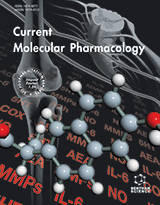Abstract
Treatment of chemical dependence (“addiction”) requires an understanding of its effects on the brain. To guide research in the area of chemical dependence, several foundational theories have been developed. These include the incentive salience, receptor down-regulation, opponent process, and psychomotor stimulant theories. These have been important both in summarizing and in guiding investigations. However, the extant theories do not provide a single unified framework nor have they yielded all of the guidance necessary for effective chemical dependence treatment. The present paper summarizes and then integrates these theories and suggests some implications for the treatment followed by this integration.
Keywords: Behavioral sensitization, dopamine, like want need, medial prefrontal cortex, receptor down-regulation, ventral striatum.
Current Molecular Pharmacology
Title:Theories and Treatment of Drug Dependency: A Neurochemical Perspective
Volume: 7
Author(s): Sheila Pakdaman, Richard E. Wilcox and Joseph D. Miller
Affiliation:
Keywords: Behavioral sensitization, dopamine, like want need, medial prefrontal cortex, receptor down-regulation, ventral striatum.
Abstract: Treatment of chemical dependence (“addiction”) requires an understanding of its effects on the brain. To guide research in the area of chemical dependence, several foundational theories have been developed. These include the incentive salience, receptor down-regulation, opponent process, and psychomotor stimulant theories. These have been important both in summarizing and in guiding investigations. However, the extant theories do not provide a single unified framework nor have they yielded all of the guidance necessary for effective chemical dependence treatment. The present paper summarizes and then integrates these theories and suggests some implications for the treatment followed by this integration.
Export Options
About this article
Cite this article as:
Pakdaman Sheila, Wilcox E. Richard and Miller D. Joseph, Theories and Treatment of Drug Dependency: A Neurochemical Perspective, Current Molecular Pharmacology 2014; 7 (1) . https://dx.doi.org/10.2174/1874467207666141017150625
| DOI https://dx.doi.org/10.2174/1874467207666141017150625 |
Print ISSN 1874-4672 |
| Publisher Name Bentham Science Publisher |
Online ISSN 1874-4702 |
 50
50
- Author Guidelines
- Bentham Author Support Services (BASS)
- Graphical Abstracts
- Fabricating and Stating False Information
- Research Misconduct
- Post Publication Discussions and Corrections
- Publishing Ethics and Rectitude
- Increase Visibility of Your Article
- Archiving Policies
- Peer Review Workflow
- Order Your Article Before Print
- Promote Your Article
- Manuscript Transfer Facility
- Editorial Policies
- Allegations from Whistleblowers
- Announcements
Related Articles
-
Transglutaminase-Catalyzed Crosslinking in Neurological Disease: From Experimental Evidence to Therapeutic Inhibition
CNS & Neurological Disorders - Drug Targets Novel Therapeutic Strategies Against Cancer: Marine-derived Drugs May Be the Answer?
Anti-Cancer Agents in Medicinal Chemistry Selegiline (l-Deprenyl) as a Unique Neuroprotective Agent for Chronic Neurodegenerative Disorders- A Lesson from MAO Inhibition
Current Medicinal Chemistry - Central Nervous System Agents PSEN1 Promoter Demethylation in Hyperhomocysteinemic TgCRND8 Mice is the Culprit, not the Consequence
Current Alzheimer Research Apoptotic Potency of Angiostatic Compounds in the Treatment of Cancer
Current Pharmaceutical Biotechnology Topotecan and Irinotecan in the Treatment of Pediatric Solid Tumors
Current Pediatric Reviews The Crosstalk of RAS with the TGF-β Family During Carcinoma Progression and its Implications for Targeted Cancer Therapy
Current Cancer Drug Targets Subject Index to Volume 10
Current Pharmaceutical Design Novel Lactulose and Melibiose Targeting Autophagy to Reduce PolyQ Aggregation in Cell Models of Spinocerebellar Ataxia 3
CNS & Neurological Disorders - Drug Targets Induction of Cytoprotective Genes Through Nrf2 / Antioxidant Response Element Pathway: A New Therapeutic Approach for the Treatment of Inflammatory Diseases
Current Pharmaceutical Design Altered Arginine Metabolism in Cells Transfected with Human Wild-Type Beta Amyloid Precursor Protein (βAPP)
Current Alzheimer Research HIF-1α Modulates Energy Metabolism in Cancer Cells by Inducing Over-Expression of Specific Glycolytic Isoforms
Mini-Reviews in Medicinal Chemistry Polymorphism in Endothelin-1 Gene: An Overview
Current Clinical Pharmacology Recent Advances in Hematopoietic Stem Cell-Mediated Regeneration
Recent Patents on Regenerative Medicine Cytokines and Chemokines as Regulators of Angiogenesis in Health and Disease
Current Pharmaceutical Design N-3 (Omega-3) Polyunsaturated Fatty Acids in the Pathophysiology and Treatment of Depression: Pre-Clinical Evidence
CNS & Neurological Disorders - Drug Targets Cannabinoids as Therapeutic Agents for Ablating Neuroinflammatory Disease
Endocrine, Metabolic & Immune Disorders - Drug Targets Cholinergic Targets in Lung Cancer
Current Pharmaceutical Design Low Doses Naltrexone: The Potential Benefit Effects for its Use in Patients with Cancer
Current Drug Research Reviews A MicroRNA-BDNF Negative Feedback Signaling Loop in Brain: Implications for Alzheimer’s Disease
MicroRNA



























